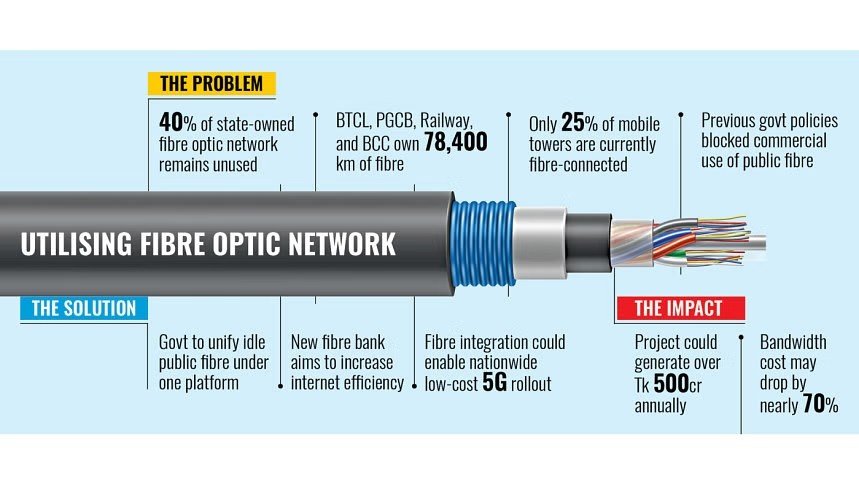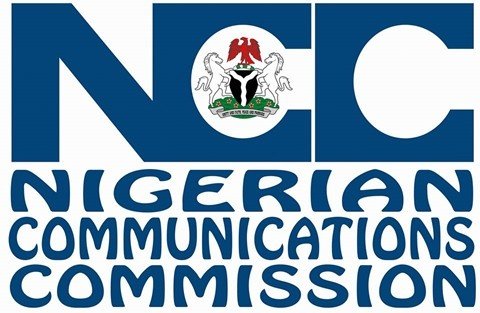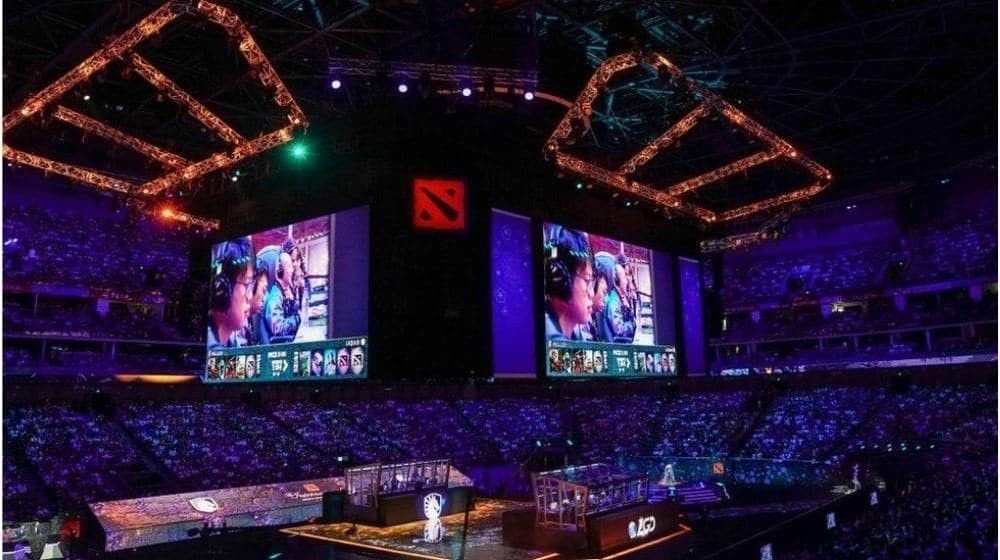The Bangladesh government has decided to create a national “fibre optic bank,” consolidating unused fibre optic resources from state-owned entities onto a single platform to accelerate the country’s digital transformation.
The telecom and ICT divisions have officially invited Bangladesh Railway and the Power Grid Company of Bangladesh (PGCB) to join the fibre-sharing consortium alongside Bangladesh Telecommunications Company Limited (BTCL) and Bangladesh Computer Council (BCC).
Faiz Ahmad Taiyeb, special assistant to the chief adviser overseeing the Ministry of Posts, Telecommunications and Information Technology, recently sent a letter to Railways and Power Adviser Muhammad Fouzul Kabir Khan outlining the government’s vision and urging their participation.
Underutilized National Asset
The letter, reviewed by The Daily Star, reveals that over the last decade, various government agencies have installed thousands of kilometers of optical fibre, much of which remains unused or idle. BTCL, PGCB, Railway, and BCC collectively own approximately 78,400 kilometers of fibre, with an estimated 40 percent currently unused.
Taiyeb highlighted the issue, stating, “We are wasting a vital national asset by leaving large portions of optical fibre unused. It’s time we came together and built a centrally managed, transparent, and efficient fibre ecosystem for all.”
The plan enjoys verbal endorsement from Chief Adviser Muhammad Yunus, allowing the Posts and Telecom Division to formally invite PGCB and Bangladesh Railway to the consortium.
Fibre Network Details and Challenges
BTCL owns roughly 39,500 km of fibre, 90% of which is underground. BCC manages 27,695 km through the InfoSarkar-3 project aimed at expanding high-speed internet to rural areas, covering 2,600 unions, with ongoing work for an additional 7,000 km.
PGCB controls about 8,000 km along the power grid, much of it underutilized. Bangladesh Railway holds 3,205 km of fibre lines, with significant unused portions.
Taiyeb notes in his letter to the Ministry of Railways that leasing the idle fibre could generate over Tk 500 crore annually.
However, incorporating the InfoSarkar-3 fibre may pose challenges, given a 2023 agreement with Summit Communications and Fibre@Home for maintenance and operation, under which these private companies receive 90% of revenues. The ICT Division is currently seeking amendments to these agreements.
Overcoming Past Policy Barriers
Taiyeb criticizes prior government policies for restricting state fibre owners from servicing telecom demand beyond their specific grids or tracks. Such restrictions favored certain politically connected private firms at the expense of public sector efficiency.
The proposed national fibre bank aims to level the playing field, maximizing the commercial and social utility of state-owned fibre assets within a transparent regulatory framework promoting competition and affordability.
Expected Benefits: Cost Savings, Faster Internet, and 5G Expansion
The national fibre bank would integrate fibre networks from BTCL, PGCB, Railway, and BCC into a single, centrally coordinated platform. Joint network maintenance under BTCL’s experienced operations could reduce expenses by up to 30%.
Bandwidth costs from private National Transmission and Transport Network (NTTN) operators could fall dramatically—from Tk 18,000 per Gbps to as low as Tk 5,000, a potential 70% reduction.
Currently, only 25% of mobile towers have fibre connections; full integration could increase this to 100%, enabling cost-effective nationwide 5G rollout.
The overlapping fibre paths also provide network redundancy, essential during natural disasters. The project would allow 1 Gbps or higher internet speeds in every union by integrating existing Points of Presence (POPs) from BTCL, BCC, PGCB, and Railway.
The initiative supports critical services including IoT, telemedicine, distance education, and smart city development.
Transparency and Real-Time Inventory
Taiyeb’s letter proposes a GIS-based real-time inventory system tracking the location, core count, and status of each fibre line, ensuring transparency in leasing and selective, need-based access. This system would facilitate emergency communications and dynamic management.
An inter-ministerial meeting involving Bangladesh Railway, PGCB, BTCL, BCC, and other stakeholders is planned to finalize the integration strategy and operational guidelines.
Revenue Sharing and Partnerships
Companies leasing fibre from the national bank will generate revenue shared among government-owned companies, the telecom regulator, and maintenance partners. Taiyeb indicated that private maintenance firms like Summit Communications and Fibre@Home would receive a share of the income.
Industry and Expert Views
Fahim Mashroor, former president of the Bangladesh Association of Software and Information Services (BASIS), praised the move, emphasizing benefits for consumers through faster, affordable internet—especially in remote areas. He highlighted the initiative’s potential to boost Bangladesh’s digital economy significantly.















